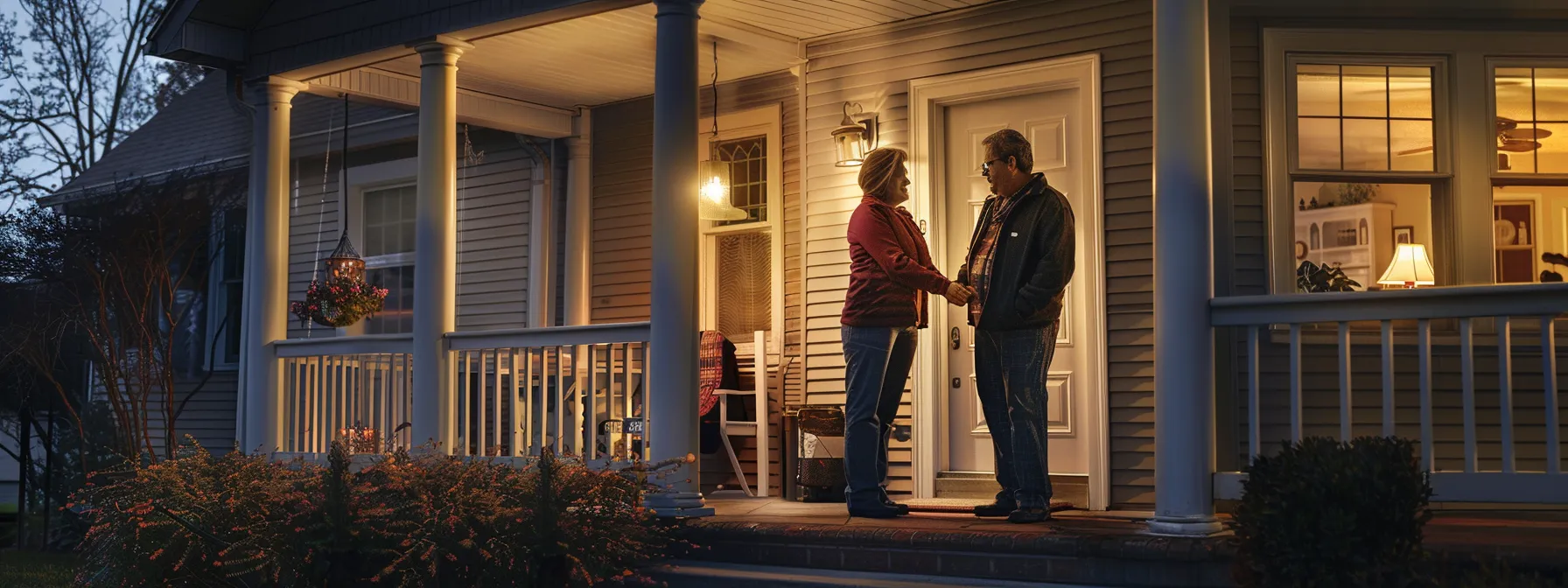Your Guide to Understanding Home Renovation Permits
Home renovation permits can often feel overwhelming, especially for those jumping into home improvement work for the first time. Understanding the permit process is vital to ensure projects, no matter their height, comply with local regulations and avoid costly mistakes. With a little research on Google, homeowners can navigate this maze more easily, making the experience less stressful. Keep reading to explore the essential aspects of home renovation permits, from identifying when one is needed to understanding what projects might fly under the radar without a permit. There’s a lot to uncover, and this guide will steer you in the right direction!
Why Understanding Home Renovation Permits Is Crucial

Understanding home renovation permits is fundamental for any homeowner looking to make changes, whether it’s updating the garage door or tackling plumbing work that involves pipes. These permits not only ensure that renovations meet safety codes and regulations but also help maintain the legality of the property. Overlooking these requirements can lead to repercussions ranging from hefty fines to complications when selling a condominium. Additionally, failure to secure the necessary permits could negatively impact the property value, affecting future tax assessments and the overall price of the home. It’s clear that navigating the permit process holds significance beyond just paperwork. Don’t forget to bookmark this valuable information for future reference.
The Role of Permits in Home Safety and Legality
Permits play a key role in ensuring any remodeling project adheres to local building codes. For example, installing a new fireplace or updating a circuit breaker requires proper documentation to confirm that the work meets safety standards google. This not only protects the homeowner but also contributes to the overall development of the neighborhood, fostering an environment where properties meet certain safety norms.
The Repercussions of Overlooking Permit Requirements
When homeowners skip obtaining the necessary permits, they open themselves up to significant risks. Home improvement contractors might refuse to complete work if they find that the proper regulations have not been followed, leading to delays and additional costs. Moreover, the National Association of Realtors highlights that homes without proper permits can face major hurdles during the home inspection process, potentially lowering the property‘s market value and complicating future sales, including common structures like carports.
Identifying When You Need a Home Renovation Permit

Knowing when to secure a home renovation permit can set the tone for any remodeling project. Homeowners should understand that not all updates, like enhancing the ventilation in a kitchen or adding a new porch, require the same level of scrutiny. Differentiating between structural changes, which may impact the integrity of your dwelling, and less invasive electrical or plumbing upgrades is vital. It’s also worth noting that local regulations play a significant role in these requirements; what might fly in one neighborhood could be a deal-breaker in another. Real estate agents often highlight these nuances to their clients, so it’s wise to stay informed to avoid any surprises down the line.
Differentiating Between Structural, Electrical, and Plumbing Projects
Homeowners should recognize that projects involving structural changes, such as adding a room or altering a foundation, often require detailed documentation, including a site plan, to ensure compliance with local building codes. Any electrical work, like installing new outlets or a countertop with built-in appliances, also demands permits, as safety standards must be maintained to secure proper occupancy. Plumbing projects can vary; while minor updates might not need much paperwork, major renovations affecting plumbing systems generally do, making it crucial to check regulations before starting any work.
The Impact of Local Regulations on Permit Requirements
Local regulations significantly influence when homeowners need permits for renovation projects. For instance, if someone plans to install a new dishwasher or undertake demolition work, the governing laws in their area can dictate the necessary steps. Additionally, if a chimney is involved or soil alterations are necessary, reaching out to local authorities can help clarify the specific terms of service that apply to these projects.
The Step-by-Step Permit Application Process

Getting the ball rolling on a renovation permit starts with knowing where to go. Homeowners often find themselves at local building authorities or checking online portals to kick off the process. It’s not just about filling out forms; having the right documents is crucial, especially when it comes to renovations involving significant features like a new furnace or landscape changes. Whether a homeowner is working with a general contractor or going solo, they must prepare for inspections by gathering all the necessary papers. Understanding the review process is equally important, as it helps set expectations for timelines and approval stages, especially if the job includes things like sidewalk modifications. Knowing the ins and outs can make all the difference in ensuring a smooth experience.
Where to Start: Local Building Authority or Online
Homeowners looking to kick off a remodeling project should first decide whether to visit their local building authority or check the online resources available. For tasks like adding a new driveway or constructing a retaining wall, these platforms often provide clear guidelines on what permits are needed. Navigating both options can lead to gathering all necessary documents, ensuring that any home improvement related to walls or other structures follows local regulations.
Documents Needed to Apply for a Renovation Permit
When applying for a renovation permit, homeowners should gather a range of documents to comply with local laws. This often includes detailed blueprints for projects involving structural changes, such as pouring concrete for a new foundation or making adjustments to electrical wiring. Additionally, proof of ownership and any relevant documentation regarding previous flood assessments may be necessary to ensure all safety and legal standards are met.
Understanding the Review Process and Time Frames
Understanding the review process and time frames for home renovation permits is crucial for homeowners tackling projects, especially when lead abatement is involved. Each municipality has its own timeline, but often, preliminary reviews happen within a few weeks, offering clarity on what’s needed for renovations like finishing a basement. Homeowners seeking FAQs regarding the permit process can often find helpful insights on local government websites, streamlining their approach to home improvement projects.
Projects That Typically Don’t Require a Permit

Not every renovation project calls for a permit, and homeowners often have the freedom to enhance their space without going through official channels. Cosmetic upgrades, such as painting walls or swapping out light fixtures, typically fall outside the realm of requirements, allowing for creative freedom. However, when planning a DIY project, it’s essential to understand the boundaries of what’s acceptable in each jurisdiction. Consulting with an electrician or a plumbing technician can clarify whether changes to electrical systems or plumbing fixtures might need the eye of a building inspector. Knowing the local building code ensures that small modifications remain hassle-free while keeping the property safe and compliant.
Cosmetic Upgrades and Minor Changes Exempt From Permits
Many homeowners can breathe easy knowing that some cosmetic upgrades, like swapping out a light fixture or upgrading a stove, usually don’t require a permit. Often, these changes fall under local ordinances, which outline what doesn’t need to go through the building department for inspections. However, homeowners should always double-check their local guidelines, just to be safe and ensure everything stays above board.
Determining When a DIY Project Needs Official Approval
When tackling a DIY project, homeowners must evaluate whether their work requires official approval. For instance, projects involving significant changes to the floor, such as installing new flooring or grading for a patio, may need a permit depending on local regulations. It’s vital to confirm the requirement for a license, especially for home remodels that could affect the structure or safety of the property.
Navigating the Inspection Process After Obtaining a Permit

Homeowners often find themselves in a flurry of activity once a contract is in place and they have secured a grading permit. Navigating the inspection process can feel overwhelming, especially when preparing for initial, progress, and final inspections. Oregon’s regulations might bring specific requirements into play, such as inspecting the installation of a shower or ensuring that easements are properly addressed. Inspectors may raise concerns that require quick attention. Knowing how to tackle these issues promptly can help avoid unnecessary delays, ensuring that the renovation moves forward smoothly and meets all necessary standards.
Preparing for the Initial, Progress, and Final Inspections
Preparing for the inspections during a home renovation can feel like a bit of a race, especially when targeting key areas such as air conditioning or bathroom upgrades. Homeowners should ensure that everything is in place, like checking if the fuse box functions properly and confirming that all installations maximize daylight in living spaces. Engaging with inspectors beforehand can clarify any specific requirements or concerns, ensuring the process goes smoothly.
How to Address Issues and Corrections Requested by Inspectors
When inspectors flag issues during a home renovation project, homeowners should address these concerns promptly. Maintaining a bond with the contractor and being transparent with the consumer can help ensure that any necessary corrections align with both safety and design expectations. This approach not only satisfies inspectors but also keeps the estate agent informed about the progress, which can be beneficial when it comes to future property valuations.
How to Handle Renovations Without a Permit

Handling renovations without a permit can lead homeowners into a tricky space, and assessing the risks and legal implications becomes key. For instance, unauthorized work like replacing a door or building a fence could expose a homeowner to fines and complications if local authorities catch wind. In many cases, retroactive permits and inspections may become necessary to rectify any unauthorized construction. This process not only ensures compliance but also alleviates potential legal headaches down the line, allowing projects to regain their footing without compromising safety or legality.
Assessing the Risks and Legal Implications
Taking on home remodeling projects without the necessary permits can lead to a mess of complications. For instance, installing a deck or replacing a sink without following zoning laws can trigger fines and potential removal of the installation. Homeowners must recognize that while using materials like wood for aesthetic improvements may seem harmless, bypassing regulations can have legal repercussions that are tough to navigate.
Rectifying Unauthorized Work Through Retroactive Permits and Inspections
Homeowners who find themselves with unauthorized renovations, such as an updated attic with new drywall or a remodeled basement, should consider applying for retroactive permits. This process involves submitting the necessary paperwork and paying any associated fees to get everything compliant with local regulations. It’s a sensible step to ensure that the property remains legal, especially when it comes to future mortgage approvals or selling the house.
Conclusion
Understanding home renovation permits is vital for homeowners to ensure safety, legality, and compliance with local building codes. Obtaining the right permits protects property value and avoids potential fines or complications during future real estate transactions. Homeowners can confidently navigate their remodeling projects by recognizing what requires permits and preparing for the inspection process. Staying informed about local regulations enables homeowners to enjoy their renovations without unnecessary risks.




